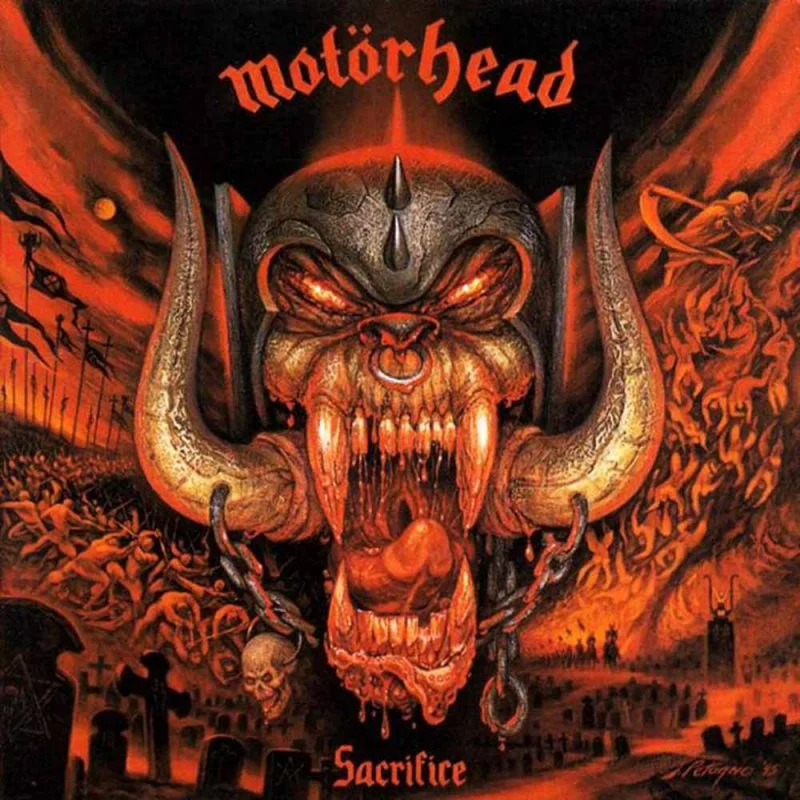After widening was completed in 2008, a portion of the highway west of Houston is now also believed to be the widest in the world, at 26 lanes when including feeders. - (Wikipedia)
WTF
And despite the extra lanes, it’s still gridlocked. Maybe they need just one more lane…
“I SWEAR BRO JUST ONE MORE LANE, ONE MORE LANE WILL BE ENOUGH!!!”
Unironically a single bike lane off to the side might have eased up traffic.
one more
lanetrain railI e moved out of Houston but if i recall correctly they also removed the rail line that was adjacent to this highway for the expansion.
There was a killer hamburger place off like Gessner that i still miss.
An old railway running along the north side of the freeway was demolished in 2002 in preparation for construction which began in 2004.
Form the wiki article linked above
Is Houston aware that some cities pay hundreds of millions of dollars to install a rail line to address this exact problem?
Disused rail lines are a RoW life raft for American cities. I cycle in a very hilly area and rail trails and trails along waterways have nicely mild grades compared to the rest of the state. Electric trams could easily co-exist with a cycle path next to them. I just hope we’re smart enough to recognize these chunks of land as a gift from the past and not give them up or develop them inappropriately (aka freeway expansions)
Well that stretch of highway is called the “energy corridor” and all the big oil companies have their headquarters there… bp, chevron, conoco, etc.
So to answer your question: No. they seem unaware.
deleted by creator
It makes a pretty compelling case for expanding the death penalty.
Looks a bit jammed on the photo though. I’m sure one more lane will fix that. /s
Just. One. More. Lane. Brooooo
That sounds like extremely bad planning. In essence they could have had several smaller highways that better suited the needs of the users without forcing them all onto this clusterfuck.
Highway planners are constrained by the fact that these roads can only be run through poor and usually black neighborhoods.
There’s already another highway 4 miles north and 4 miles south of it. There’s some 2-lane each way roads between, but anything bigger or more grade-separated would be further isolate communities, take away alternative transportation routes, and take away greenspace.
Includes the express lanes and the frontage roads. It really shouldn’t, you aren’t supposed to just drive the entire trip on the frontage roads.
Meaning it’s even wider than 26 lanes because of the space between the feeder and the highway, the extra shoulders, and barriers to the express lanes.
But its Texas, we have space. Isn’t the point that its too many lanes/cars, not the space?
Too much space taken up by non-places means more distance between places, increasing dependence on cars, requiring more lanes, which take up space.
Whats the alternative? Walking? Its 100+ degrees 3 months out of the year and humid as fuck.
The alternative was not to feed into propoganda and let the car industry convince us to only build car infrastructure. We’re fucked now without major time and work. Trains, buses, and final mile helpers like bikes and walkways together would have moved our millions more efficiently. Now we get to sit in our gridlock, with people who believe the earth is flat operating another four ton beast three feet away from us. Happy travels.
Reduce 27 lanes to 4 lanes with bus priority lanes and put people on a bus. Thats 27 cars with 5 people in roughly 2 buses with ~50 people.
Then you’d be riding with the sort that have to ride the bus. I personaly like not being stabbed or pissed on.
Biking, buses, trains, underground tunnels.
I sometimes have biked to work in the summer not far from where that picture was taken and I live like 15 miles away. Its even more comfortable if you use an ebike. Unfortunately, I get that’s not an option for everyone (personally have been off the bike due to an injury this summer).
Not everyone is a masochist. A lot of people find Houston heat intolerable.
Isn’t the whole point of dense urban development so that you can avoid going outside for too long?
Even in the US, Las Vegas showed how to connect independent complexes together without forcing people to go outside.
And few people rode them as cars became more popular
Houstonian of 30+ years here.
Even with the insane number of lanes available, driving anywhere inside beltway 8 between like 12 pm and 8pm is hell on earth. And outside those hours, you’re playing chicken with drunk drivers.
Before I started working remote, I used to clock my average speed to and from work. Most of the time it was 15-20mph on a 65mph freeway. Literally bicycle speeds. Without cars or gridlocked traffic, I could have commuted faster on a bike.
More than one person dies in Houston traffic every day on average. This is probably the shittiest and most expensive form of mass transit mankind will ever build. At least I hope this is as bad as it ever gets, lol.
It’s absolutely insane how many people die every single day because we thought it was a good idea to let everyone operate multi-ton pieces of heavy machinery at hundreds of km per hour on the reg.
How the fuck is there more regular testing and training for people driving forklifts than Dodge Rams?
Simple, if you fuck up on a forklift you are damaging company property.
And as we all know, company property has more rights than people.
To be fair, those forklifts can be quite dangerous. Just ask Klaus.
Klaus seems like a fine dude
Seemed* 😔
Last time I was in Houston I was driving in bumper-to-bumper traffic that was going 95 mph. I looked over to my right and saw a group of five cars pass me going at least 10 to 20 mph faster. This would not have been remarkable except that I was in the right lane and these cars were passing me on the shoulder.
This being Houston, though, that’s still probably not remarkable.
Can confirm, this happens a lot too. That level of recklessness should be remarkable, but that’s just how people roll around here. There’s a special sort of Houston PTSD that comes from almost dying in a car on the way to work every single day.
Is that a typo? Or were you actually bumper to bumper going 95 mph? That seems like some death race material
Unfortunately I don’t think that is a typo, lol. Death race is definitely how I would describe the I-45 Houston experience. If I’m not mistaken, the section of it that runs through Houston is actually one of the most dangerous stretches of road in the entire US. People absolutely tailgate at 90+ on that road.
NOT a typo. 95mph and bumper-to-bumper.
Imagine the insides of your lungs after years of that.
Air quality (or rather the lack thereof) is a problem in parts of Houston. If you ever want to go down an internet rabbit hole, google the Houston cancer clusters. Or the Brio superfund (not superfun) site. I try not to think about it when I’m outside taking a walk 🫠
Read again.
Without cars or gridlocked traffic, I could have commuted faster on a bike.
I live in a medium-sized city and I learned years ago that if you want to get anywhere on time, stay off the freeway. It’s not nearly as wide, but it has on ramps at shit intervals and the on ramps mostly give you no room to accelerate to highway speeds, so it’s always congested. I’m actually about to go a couple towns south as I write this and looking at GPS the freeway route which is the most direct will take 20 minutes longer than simply going through back country roads that add an addition 10 miles to the trip.
Freeways cause traffic by creating bottlenecks.
How far did you have jt to work? Woukd it technically be cyclable (albeit not on the freeway)?
I’m sure another lane or two will fix the problem!
Going 20 mph for any distance on a bike includes and assumption of good health, includes carrying a change of clothes, and shower which most workplace don’t offer.
This is true, particularly in the brutal heat this summer. My mind just turns to selfish solutions when I’m stuck in bumper to bumper traffic.
You would think that somewhere between the 10th and 26th lane of this urban hellscape, someone calling the shots would stop to ask “hey guys, y’all think maybe there’s a better way to do this?” But since this is 'murca, that guy probably got fired and replaced by some ex-executive of a company best known for its crimes against nature.
Or an eBike
This will soon become top 100 most popular photos. Its synonymous with car dependency and post WWII American urban planning
Also, this one. Insane traffic in Los Angeles, 1993.
Future ppl are truly going to consider this time a dystopia.
Government offloaded transportation onto individuals and parking onto business, now everyone is worse off.
The Federal Highway Administration has a multi-billion dollar budget, and doesn’t include the multi-billion dollar budget each state allocates to their state highway departments, or the multi-million dollar budget most large cities allocate to their streets and highways departments, and many cities unconditionally grant valuable street real estate to individuals to park for free.
It’s not an anarchocapitalist conspiracy, it’s a massive subsidy for motor vehicle owners.
bUt pUBliC tRanSpOrTAtiOn nEeDs tO mAkE a pROfiT
4chan can be surprisingly perceptive sometimes.
Broken clock, etc
It’s almost like out of a very large amount of people, a few of them might sometimes be smart.
How common/usable is subway in bigger cities? Here in Prague we have an amazing public transport, even with priority lanes for buses at some places and most importantly a pretty decent subway. I’ve never had an issue getting anywhere around the city in a short time (I can get anywhere in the city within 1.5 hour max (that is including suburbs around Prague), around 30 mins to places around the center), and the cost of an unlimited year-long ticket is just 150EUR.
Oil and automotive companies literally tore most of public transport out in US way back when.
They would invest into the local tram companies, buy them out, then close and tear out the lines.Public transportation in the US is at best, an afterthought. A lot of major cities have buses/trolleys but not many have trains/subways. Only the largest cities have a workable public trans system such as New York, Chicago, San Francisco.
And as someone who lives right outside SF, yes it’s one of the best cities for public transit in the US, but it can still take 2 hours to go somewhere that would take 30mins in a car.
Not all the time - sometimes it’s just as fast as a car, but often enough that it’s a deterrent.
And mind you, I live literally across the street from a train stop, so public transit is way more convenient for me than for most in the area.
LA used to have one if the best trolley systems, then it got ripped out. It was the sub plot to who framed Roger Rabbit.
Portland is talking about eventually making its MAX Light Rail a cut-and-cover subway over the course of the next few decades. The system is suffering from the effects of decisions made in the 1970’s when the system was being created. At that point, it was limited to a stretch from the suburb of Gresham to downtown. Since then, that line has been extended to go to a completely different set of suburbs. So where a train being slowed down by downtown traffic was acceptable when that was the terminus, now that is unacceptable because it will affect many more stops.
The light rail also has all four lines in the current system going over the Steel Bridge. In the event of the Cascadia Subduction Zone earthquake, that aging bridge is predicted to crumble, crippling the system for years. It also acts as one of the chock points in the system. Currently that’s not the biggest bottleneck - that’s hiring drivers - but as system ridership recovers post-COVID it will become a problem for schedules again.
A few things need to happen before Portland’s ready. First and foremost is simply having more people using the system. Right now the capital costs are prohibitive given the ridership. I think this will continue to improve over time. Portland has increasingly bad traffic and it’s only getting worse. Transit is often faster than going by car, depending on the trip. The city hasn’t had much stomach for expanding roads over the past few decades, so I think the main outlet will be transit.
In the US, public transportation is pretty much unusable in bigger cities except for NYC.
America has this weird, masochistic relationship with cars that just gridlocks everyone. But “FreEdoM.”
One potential reason posited by The 1619 Project is due to white Americans moving out of metro areas after WW2 in order to “escape” black residents. Then, they restricted expansion of public transportation development to those areas because making them more accessible and usable would potentially result in a influx of poorer, black residents who can’t afford a car to commute to the suburbs.
The specific example they used is Atlanta, which has staunch racial lines, horrible public transport, and some of the worst traffic in America. They make a very compelling case.
Here is the relevant New York Times article about it and it’s Chapter 16 in the actual book
This must also happen in reverse. The hip expensive city center and the poorer suburbs?
I think definitely in downtown areas with a large night culture, but to a much lesser extent. The entire city center isn’t expensive, just the “hip” areas where the money is being spent. There are tons of poorer areas inside city limits that definitely have a lower cost of living compared to owning a house and a car
Chicago?
Chicago is pretty expensive for public transportation. A monthly pass is $75 for the L and buses. A commute from the northern suburbs is $100 a month for Metra trains and an additional $30 per month for buses and the L. There are discounts for people that qualify.
The price and the poor schedule to northern suburbs makes it unusable for me. It’s great for weekend trips to the city.
$130 is still a cost saving compared to gas, depreciation, and renting a parking space in town though, isn’t it?
For many people that’s true, especially if you don’t need the Metra pass. I’d consider it if the stops to my station were scheduled more often. The bar car is gone from the Metra, but they still allow alcohol so you can relax, have a drink, and listen to music.
It’s my freedom to sit stuck on hot asphalt for hours at a time. Gridlock is real American freedom.
It’s insanely bad. Hell, Canada has shown that public transit is viable with the North American development model, but the US simply refuses to invest money into public works.
Vancouver SkyTrain and Montreal REM/Metro are both fast, highly efficient subway systems that are able to navigate single-family housing development. Why can’t the US?
Come to Toronto/The GTA, the lack of investment in public transit is on par with the rest of North America.
When I was in Toronto, the transit wasn’t great but it was at least better than Boston/Philadelphia…
Not many U.S. cities have a subway. I think the only substantial subway system is in NYC. The city I live in has a very short commuter rail line that doesn’t go to/from anywhere people want to go. Buses are gridlocked in traffic like everyone else, and have to make frequent stops, so it can take something like 2 hours to travel 10 miles. The low-wage workers I know without vehicles just spend $40/day on Uber to commute to work and back (which is a significant percentage of their pay).
NYC is by far the best, but several other cities have fairly decent subways. Boston, DC, Chicago, and San Francisco have decent systems, although Chicago’s is an elevated train and Boston’s has had increasingly severe issues due to underfunding maintainence for decades.
deleted by creator
unfortunately it is not the case for most of countries. For example, here, in Azerbaijan, rural public transport basically doesn’t exist, and in capital city - Baku - schedules, traffic, prices… They all suck. We only got underground metro, but as that is only sane transport, everyone uses it and on critic hours it also suck. Sadly.
Very few cities have any acceptable public transit. The only reasonable options are in the NYC area.
Building subterranean rail after the fact is just not feasible.
Japan probably has the best rail system with JR. To do that in the US, you would probably need to remove a lot of roads. I would welcome it, but I don’t know how the public would feel about losing roads to trains.
Dont take it the wrong way but 1.5 hours doesn’t sound great for every day travel.
That’s to the opposite side of the city, I’m guessing every day travel would be somewhere around those 30 mins
That was an extreme, if I really need to get somwhere on the outskirts away from the subway. I don’t think I’ve ever had to travel for longer than 40 minutes in a long time, an average not counting work (which I have literally two tram stations near home) would be around 30 minutes. Definitely way faster than by a car.
Ah ha! I see the problem. It looks like more lanes may be needed.
Just one more lane bro. https://youtube.com/shorts/0dKrUE_O0VE?feature=share
But you dont get it, managers need you at the office so they can feel important. You just need to lose 3 hours of your day, spend more money and pollute more, STOP BEING SELFISH!
This reminds me of Andre Gorz - the social ideology of the motor car . Essentially:
The invention of the personal automobile, and destruction of public transportation, was a triumph of capitalist drug-peddling; suddenly, all at once, everyone’s personal mobility became dependent on a single, new commodity, gasoline. Without it, we are unable to function, since urban sprawl and suburbanization now means we can’t even walk to work if we wanted to.
And going by time, by spreading everything out, it ended up taking the same amount of time to get to work, in 1900 as in 1980.
I just read it, what a good article. I’m not sure I see the vision at the end, but I totally agree with the way he describes every aspect of the problem.
Some of my favorite excerpts, in addition to the one you quoted:
“The typical American devotes more than 1500 hours a year (which is 30 hours a week, or 4 hours a day, including Sundays) to his [or her] car. This includes the time spent behind the wheel, both in motion and stopped, the hours of work to pay for it and to pay for gas, tires, tolls, insurance, tickets, and taxes .Thus it takes this American 1500 hours to go 6000 miles (in the course of a year). Three and a half miles take him (or her) one hour. In countries that do not have a transportation industry, people travel at exactly this speed on foot, with the added advantage that they can go wherever they want and aren’t restricted to asphalt roads.”
You’ll observe that automobile capitalism has thought of everything. Just when the car is killing the car, it arranges for the alternatives to disappear, thus making the car compulsory. So first the capitalist state allowed the rail connections between the cities and the surrounding countryside to fall to pieces, and then it did away with them.
These splintered cities are strung out along empty streets lined with identical developments; and their urban landscape (a desert) says, “These streets are made for driving as quickly as possible from work to home and vice versa. You go through here, you don’t live here. At the end of the workday everyone ought to stay at home, and anyone found on the street after nightfall should be considered suspect of plotting evil.” In some American cities the act of strolling in the streets at night is grounds for suspicion of a crime.
No means of fast transportation and escape will ever compensate for the vexation of living in an uninhabitable city in which no one feels at home or the irritation of only going into the city to work or, on the other hand, to be alone and sleep.
I still can’t get over how two lanes wide rail system can be more efficient than whatever I’m seeing now.
Key word is can be. If transportation planners are lazy enough to only build more lanes on the major highway, who’s to say they can build an efficient rail system. The major issue is a misallocation and a general lack of funding for transportation projects.
That gave me a good chuckle.
It’s odd how we’ve commoditized such selfishly resource hungry transportation. I like walking to stuff as long as where I live is safe.
This is true. Commuting in an urban or suburban environment should be significantly easier than it currently is. Public infrastructure needs to improve and become less car-centric. That being said, if you live in a rural area or a small town where there is very little traffic, or if you need to pick up groceries for your family of 4+, cars are needed. People in anti-car communities do not like to hear this, but I do not think cars should be criticized for merely existing. Current infrastructure should be criticized for only considering them. I think that while holding on to the idea that car=bad is fun, it also sours people who genuinely rely on cars to the movement and limits what actual progress could be made by these communities to make walkable cities a reality. Thank you for listening to my ted talk.
It’s extremely hard to nuance any conversation on any forum when multiple people interact. People almost always assume you’re pro or anti something. It’s also easier mentally to reject what doesn’t match your views.
Debating on the internet is useless most times to convince the other party, but I’m sure some people reading it who haven’t made up their mind on the subject can appreciate a well put out idea and maybe consider it before making up their mind.
My truck is used for hauling junk, supplies, tools, moving appliances etc. My job doesn’t work without a truck. Can’t get abandoned furniture to the dump on a bus. It is what it is.
This seems like a straw-man criticism. I have never seen the anti-car communities attack people in rural areas for needing cars.
Staw-man involves making claims that something is ssying something it isn’t. Many of the posts I have seen and comments I have read suggest that the mere existence of cars is a problem. This is what I have a problem with because some people in rural areas, for example, need cars. I am not claiming that anti-car communities attack people in rural areas, rather, it can seem that way for those people.
Changing to a different form of transportation, unless it involves teleportation, is just moving the problem somewhere else. It might be all electric, and it might get you there twice as fast, but you’re still just leveraging a tactic that moves the goalpost and delays the inevitable.
Ultimately, there is no right answer to this. The greater the population, the greater the problem. If everyone who could work remotely started doing so, and the rest were afforded decentralized centers for the onsite labor they must do, this would be a more manageable problem. But eventually, we’d be back where we started - it’d just be a higher concentration of onsite workers generating all the traffic, and they might have less distance to travel.
Coruscant’s traffic problems, or maybe 5th Element’s, are what we’re destined for.
Better solutions move the problem elsewhere? I’m moving the goalpost and delaying the inevitable? I have no idea what you are talking about.
This shit is pure madness
The answer is because local governments prioritized cars over streetcars and public transportation:
The real problem was that once cars appeared on the road, they could drive on streetcar tracks — and the streetcars could no longer operate efficiently. “Once just 10 percent or so of people were driving, the tracks were so crowded that [the streetcars] weren’t making their schedules,” Norton says.
We used to have public street cars where I live that took people up and down the hill, but they sold out to a car company. I believe it lasted 2 years before the car company shut it down all together. Wild stuff!
Just get a bicycle bro
Yeah, because biking 35km soon after waking up, then another 35km after work, is super easy for sedentary people /s
That’s pretty easy to do on an ebike!
You won’t be sedentary after a month of that though!
If the transit doesn’t kill me first. For my personal situation, half of that course would be in highways with cars going at 80+ km/h.
Luckily, I can and do take a bus instead of driving there, saves me so much stress and headache, not to mention that I can use the ~1h downtime to watch or read something
I live about 45min outside of a major city. I’m also looking for my first career type job. We do have a train that goes into the city which my mother has taken for many years. The only way I’d be ok commuting in would be if I can take the train or a bus. Thinking of spending an extra 10hrs+ driving each week sounds so terrible. That’s 25% more hours each week that I don’t get paid and instead have to pay money. The only other way would be a hybrid schedule with only 2 days commuting per week.
I actually get kind of excited to commute by train, I used to not have a car up in the twin cities and I read so much more having to take public transit. I would totally get a steam deck or ROG ally and finally get to play Hades and Hollow Knight.
There are downsides though. Like if you want to go by the store or a friend’s on the way home you probably can’t. Also if you just miss your train, you might be waiting a long while. Lastly our train here is fairly dangerous and the nearest stop is in one of the most dangerous cities in the US.
I wish biking was easier but where I live there is no way I could get into the city. Plus I used to bike to my first job, about 5 miles, and it sucks to get there and be sweaty. Guess with e bikes now that isn’t as big of a deal.
I have a game that I always play on the road. Either I play it, or I sleep, if the day or the night before were rough. The fact that I can do either and chill until I get to work or home is fantastic. Where I live, the drive culture’s pretty bad and you always have to be hyper focused during the entire drive.
Also, a part of my salary is calculated based on how far I am and how long it takes to commute. If I drive, the cost of fuel easily exceeds that part of the salary.
Dies in a week from sweating
in most parts of us that is not an option any sane person would choose
I did that until I got hit. I’m not willing to die to get to work.
When I had an actual separated bike path, though, it was wonderful.
I drove 550 miles to another state for work travel, bringing an entire car load of work related stuff too. Doing that on a bike would be pretty hard…
80% of the US lives in metropolitan and micropolitan areas. Most people work in the same metro or micropolitan area that they live in.
Biking will never work for every trip for everyone. Public transit will never work for every trip. But it’s something that can work for many more trips, given better zoning & infrastructure. If you’re in a town, city or suburb, you shouldn’t need a car to buy milk or have a pint with friends.
Getting most people out of cars is good for everyone. Cars lanes have much, much lower throughput than bus lanes or bike lanes do. Think about how much nicer driving is if you’re not stuck in traffic.
deleted by creator
https://duckduckgo.com/?q=einsitzer+auto
Yes, german. English pages are mostly making fun of the theme, displaying F1 cars and so on. Different mindset.















